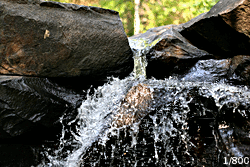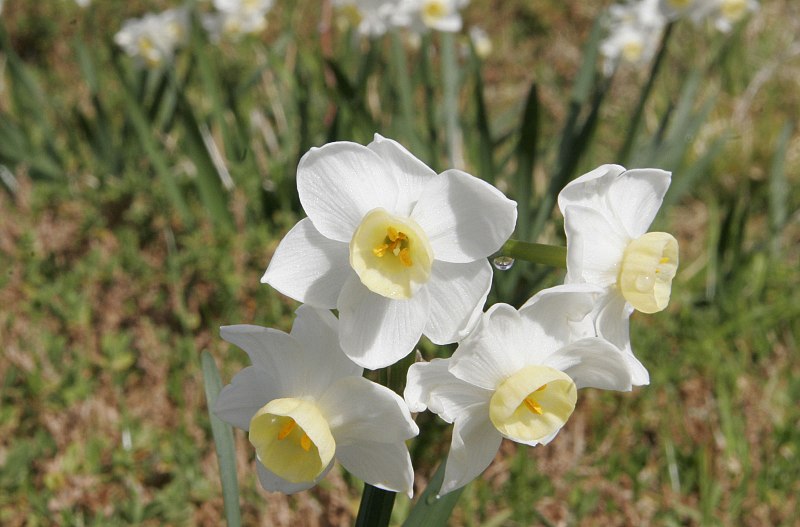Kalau sudah ada yang auto, kenapa harus pusing dengan setting secara manual?
Kalau anda mengharapkan foto yang anda jepret itu jelas, warnanya bagus, pixelnya tinggi, ya, fungsi auto sudah cukup kok,, kenapa pusing2… Tetapi kalau anda pengen memberikan sentuhan yang berbeda, membuat foto kita kelihatan beda dari yang lain, membuat foto menjadi sesuatu tidak bisa terlihat dengan mata manusia, maka anda harus melakukan setting secara manual,
Pernah complain dengan foto yang anda ambil itu blur(tidak jelas)? Warnanya tidak memuaskan? Lightingnya kelihatan aneh? Ada beberapa situasi, fungsi automation setting tidak bisa memberikan hasil yang terbaik, kalau anda menguasi teknik mengatur sendiri pengcahayaan, well, problem solved..
Three Main Gateway
Kalau kita belajar matematika, kita akan memulai dengan 4 dasar yaitu, +,-,x,/, di photography, kita memulai dengan 3 dasar mengatur cahaya yang masuk ke sensor ataupun lebih dikenal dengan three gateway of light, three methodology, dll. Ketiga hal itu adalah Shutter Speed, Aperture, dan ISO Speed (Sensitivitas Sensor terhadap cahaya)
Shutter Speed adalah kecepatan tirai penutup sensor. Semakin lambat tirainya bergerak, semakin banyak cahaya yang masuk ke sensor,. Shutter speed yang tinggi bisa menangkap object yang bergerak cepat dengan jelas, misalnya mobil yang bergerak, sedangkan shutter speed yang lambat, bisa merekam gambar dengan lambat, sedangkan benda yang bergerak bisa kelihatan motion-nya . Untuk pemahaman cahaya yang masuk melewati kecepatan shutter, kita bisa memakai analogi jendela dan pintu jendela. Ketika kita menekan tombol shutter, pintu jendela ini akan membuka, dan menutup kembali. Ketika pintu jendelanya dibuka secara lambat, cahaya yang masuk melewati kedalam ruangan semakin banyak daripada pintu yang dibuka dengan kecepatan tinggi.

Aperture adalah lubang cahaya yang masuk ke sensor. Ukuran aperture ditentukan oleh sebuah alat yang bernama diaphragm. Cahaya yang masuk masuk dari lens, bergerak melewati aperture sebelum masuk ke sensor. Fungsi sebenarnya ukuran besar kecilnya aperture adalah untuk mengatur kedalaman ketajaman gambar. Aperture yang kecil mempunyai ketajaman yang lebih dalam sedangkan aperture yang besar memiliki kedalaman yang tidak dalam, sehingga object yang berada diluar dari kedalamanan akan kelihatan kabur. Bagaikan mainan laser, semakin kecil lubang cahaya laser, maka semakin jauh laser bisa memantulkan cahaya, dan semakin lebar lubang cahaya, maka semakin tidak jauh laser bisa memantulkan cahayanya. Kita bisa mengunakan kembali analogi jendela dan pintu jendela diatas untuk pemahaman pengaturan cahaya lewat aperture. Kalau kecepatan pintu jendela membuka dan menutup kembali itu adalah shutter speed, maka jendela itu sendiri adalah aperture karena cahaya memasuki sensor lewat jendela itu. Semakin lebarnya jendela maka otomatis cahaya yang masuk lebih banyak dan begitu juga sebaliknya.

Satu hal yang akan selalu membingungkan pemula adalah besar aperture bukan ditentukan besar f number,, tapi sebaliknya. misalnya f 2.8 adalah aperture besar sedangkan f22 adalah aperture kecil..
Aperture Besar (f/5.6)

Aperture Kecil (f32)

Kombinasi antara shutter speed dan aperture adalah kunci untuk menentukan sebuah gambar itu memliki exposure yang tepat. Ketika berada di tempat yang terang seperti outdoor, kita bisa menggunakan shutter speed yang tinggi dengan aperture yang tinggi untuk mengurangi cahaya yang berlebihan masuk kedalam sensor supaya hasil dari foto tidak terlalu terang. Sedangkan ketika berada ditempat tidak terlalu terang seperti indoor, kita bisa menggunakan Aperture yang besar dan Shutter speed yang lambat. Namun shutter speed yang lambat sangat sensitive dengan pergerakan camera. Kamera yang bergerak saat shutter speed lambat berjalan akan menyebabkan gambar yang kabur. Di situasi seperti ini, penggunaan Tripod (alat tempat camera berdiri) atau kecepatan ISO bisa menjadi solusi.
ISO Speed adalah sensitivitas sensor terhadap cahaya. Penggunaan ISO yang tinggi bisa membantu sensor menrespon cahaya dengan lebih cepat, namun semakin tinggi ISO, akan menimbulkan noise. Noise membuat gambar kelihatan tidak jernih,.

Dengan kombinasi tiga pintu masuk cahaya, kita bisa mengatur settingan cahaya sesuai situasi dan kebutuhan kita dimana fungsi Auto kadang tidak bisa melakukannya dengan benar. Kalau kita melihat object lewat viewfinder yang merupakan refleksi dari cermin, bagaimana kita mengetahui sebuah settingan itu over exposure atau kekurangan cahaya. Biasanya di Viewfinder ada meteran cahaya untuk kita mengatur exposure yang tepat. Begitu juga kalau melakukan live view dari lcd secara langsung,, ada sebuah meter kecil terletak bagian bawah lcd atau bagian atas.
Masih banyak settingan dan teknik, kita akan membahas lebih lanjut disambungan topik ini.
Gambar diambil dari Wikipedia, www.imaging-resource.com, Enjoy! Discover the real joy of photography,










